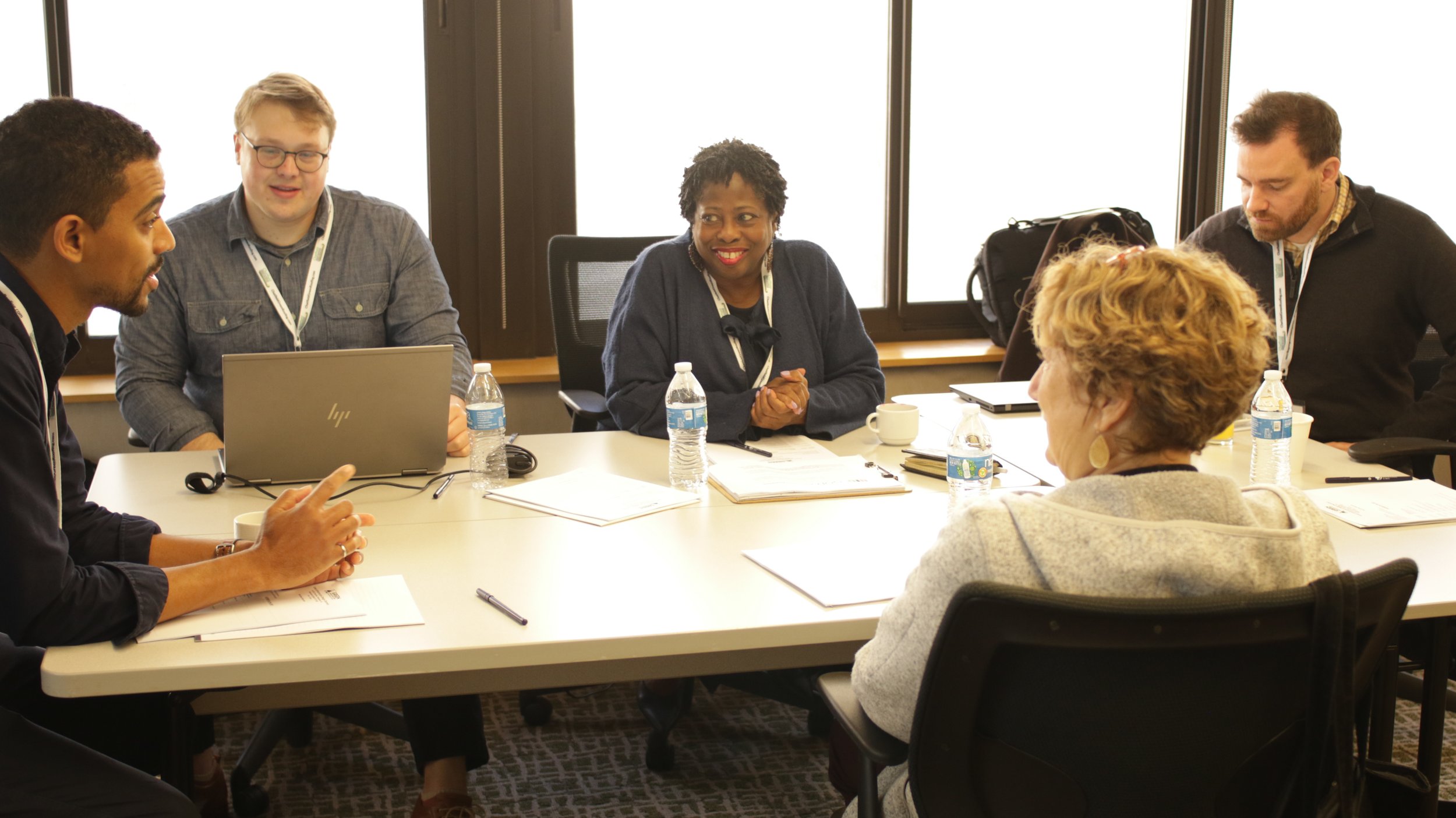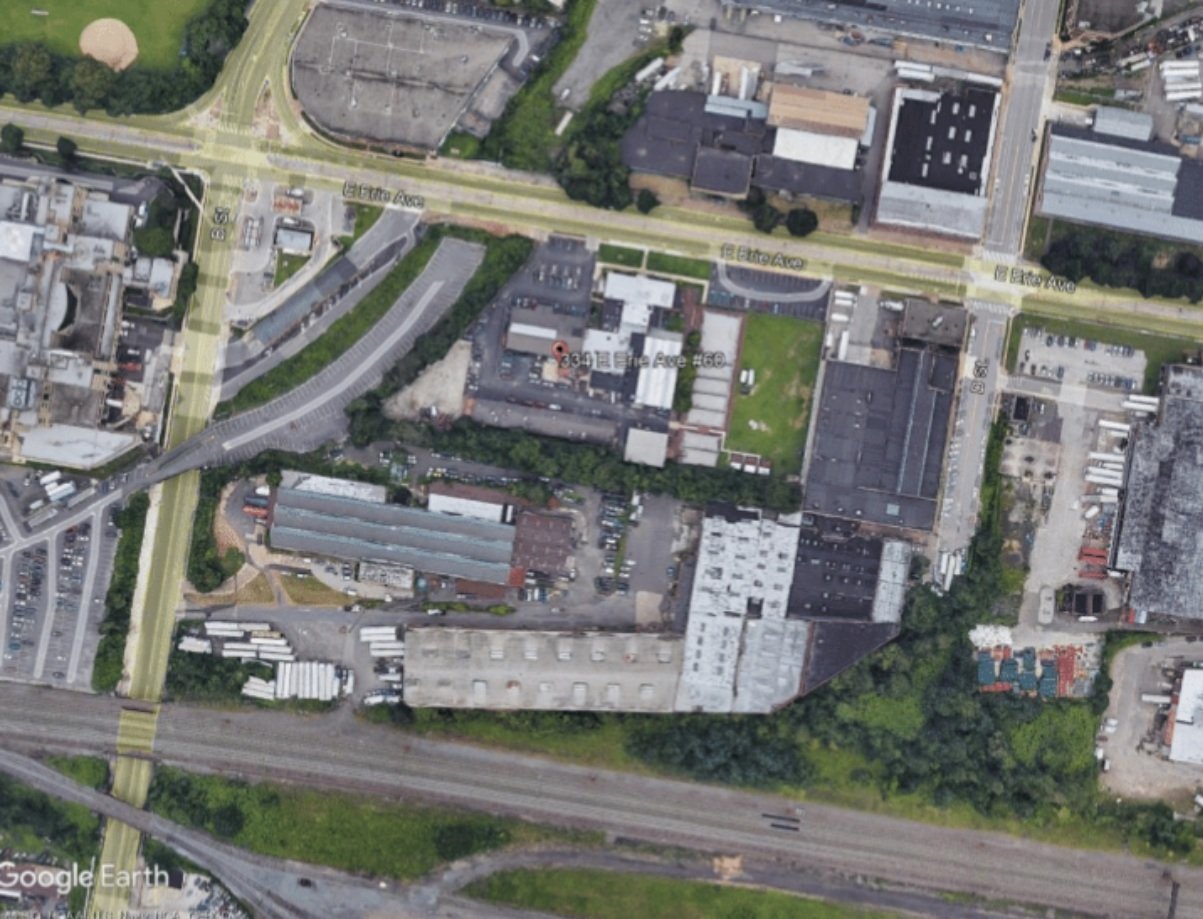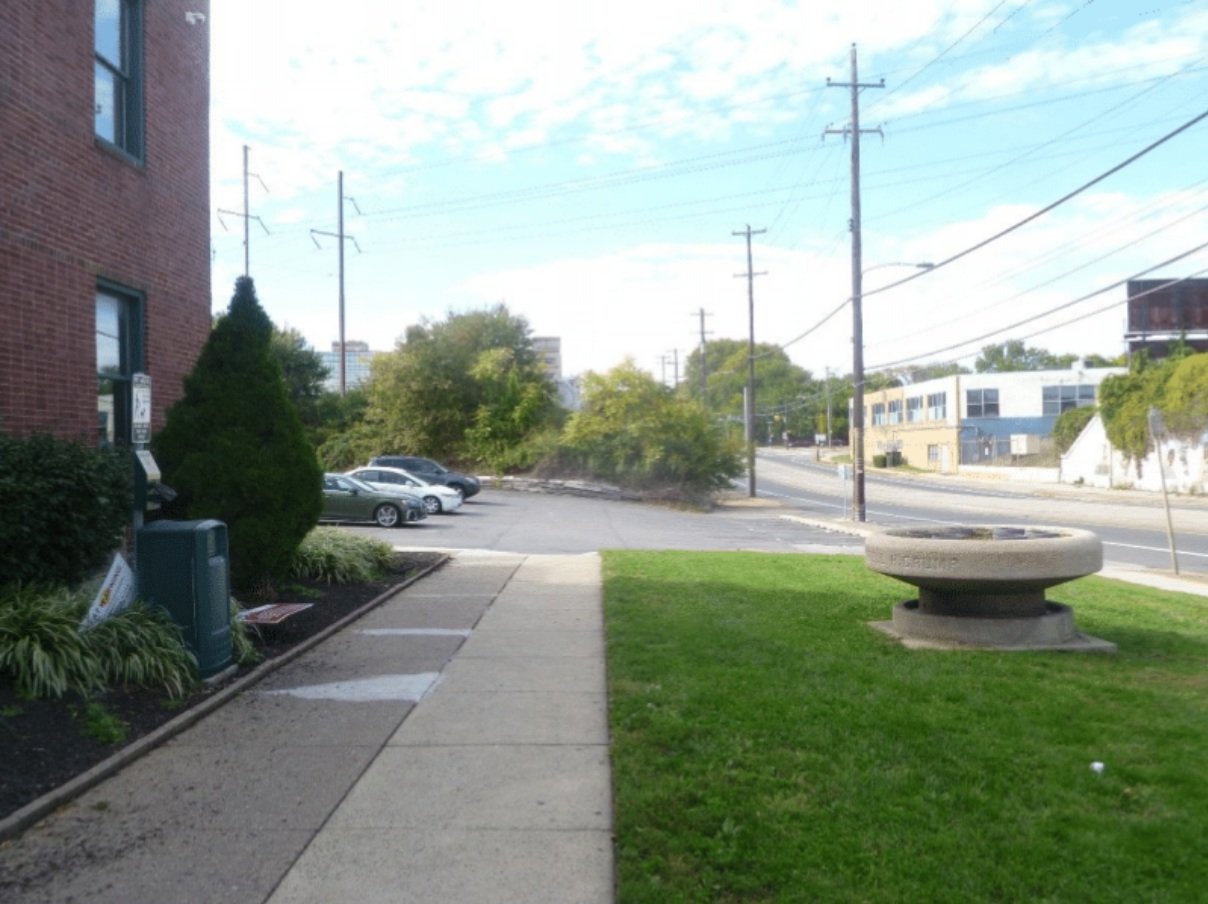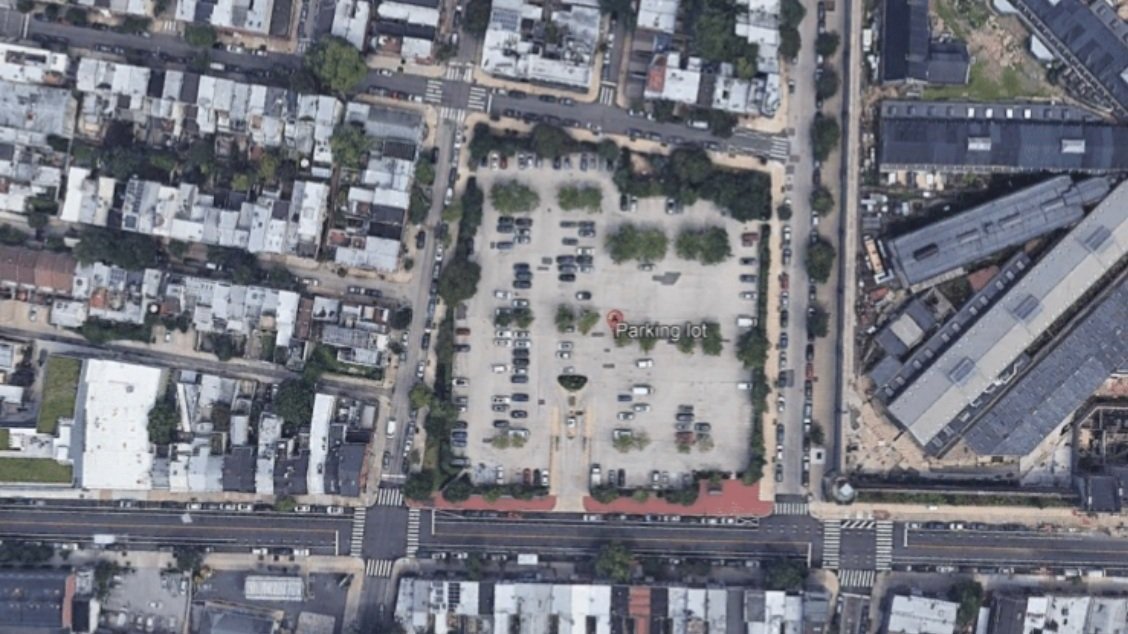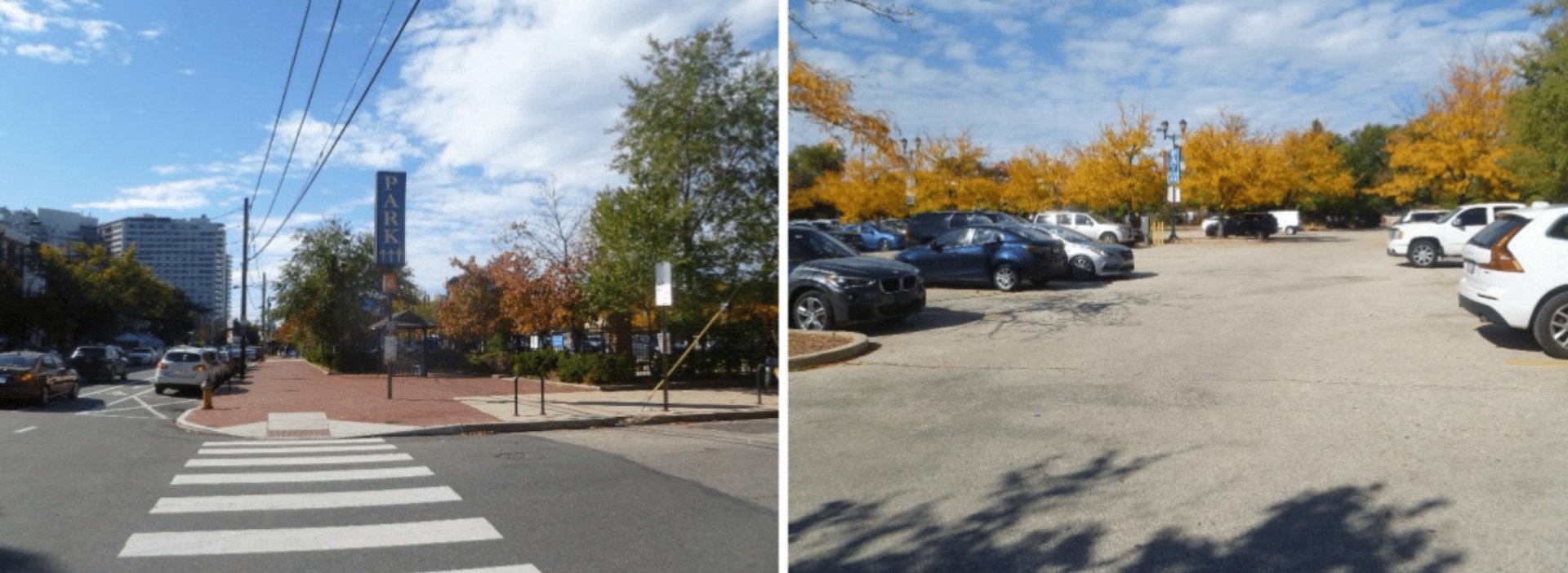Visioning Community-Scale Green Infrastructure in Philadelphia at CitiesAlive
Advertisement
Introduction
GI Charrette Process-Facilitators providing GI Charrette overview and siteinformation, Green Infrastructure Foundation (GIF). Photo: Green Infrastructure Foundation
As part of Green Roofs for Healthy Cities’ annual CitiesAlive conference last October in Philadelphia, an innovative, engaging day-long session was held to explore the potential to rapidly scale up the application of Green Infrastructure (GI) and then calculate the multiple benefits and values that would result. An on-going program of the Green Infrastructure Foundation (GIF), this was the next in a long-running series of Green Infrastructure (GI) Charrettes we have conducted in cities throughout the U.S. and Canada over the past fifteen years. GIF’s GI Charrette Program is helping community groups to learn about and better understand GI economic and environmental performance at a larger neighborhood or campus (community) scale.
This is the first article of a two-part series which will describe the GI Charrette process, using the Philadelphia event as an example. The second article (in an upcoming LAM) will include outcomes from the summary report, including conceptual illustrations and a GI Cost/Benefit Analysis unique to the Charrette.
The Players
The GI Charrette in Philadelphia was supported through several months of pre-planning leading up to the conference by an extensive team including GRHC staff and a volunteer conference planning and event production committee, consisting of GRHC board members, and team members from a number of firms and organizations who generously donated time, materials, and financial contributions:
Arup, international sustainable development design, engineering, and consulting firm
Blacks in Green (BIG), an environmental justice and economic development 501c3 non-profit tackling pollution and poverty with a system BIG created – The Sustainable Square Mile™, based in Chicago
Ferguson Waterworks, providing innovative products and solutions across the water, sanitary sewer and stormwater management industries
Greenleaf Communities, a nonprofit 501(c)(3) organization advancing a healthy and sustainable world through applied research and collaborations in water, climate, energy, and soils/agriculture
Meliora Design, Philadelphia-based civil and water resources engineering, green stormwater infrastructure, and master planning firm, and
Philadelphia Water Department, implementing the Cities’ Green City Clean Waters on-going 25-year plan to reduce the volume of stormwater entering combined sewers using green infrastructure and to expand stormwater treatment capacity with traditional infrastructure improvements.
Advertisement
The GI Charette is meant to mimic in brief, an actual integrative planning and design process. The GI Charette brought together a cross-section of participants in addition to representatives of the above-mentioned organizations to serve as “stakeholders/co-designers”. Participants included landscape architects, civil engineers, product suppliers, developers, community groups/leaders, municipal staff, and others. This is the type of diverse, multidisciplinary design and community stakeholder group that must come together and collaborate for GI applications in order to evolve the most effective, impactful planning and design solutions.
The Method
The activity portion of the GI Charrette is a fast-paced, highly interactive event, structured to engage all of the participants so that their awareness of the potential to deploy living GI practices at-scale is inspired and enhanced, regardless of previous experience or knowledge. Sometimes the event occurs over a two-day period with a tour of the site on the first day, however the event in Philadelphia was conducted in one (full) day.
The charrette adopted a 9-step process developed by Arup in collaboration with the Green Infrastructure Foundation. The process aligns with the C40 Green and Thriving Neighborhoods framework to encourage holistic thinking, with recognition of local context, needs and drivers.
In Philadelphia, the facilitators from GIF and Arup, guided the participants through an engaging experience of getting to know the case site, developing a renewed vision for this component of the neighborhood, and implementing measures to ensure future-proofed outcomes which benefit the community, environment, and the local economy. The following is an outline of the steps of the process:
Step 1 - Getting Started - Meet Your Team
Following a brief overview of the day’s agenda and intended outcomes, the group was re-organized into Working Groups of 8-10 individuals. The groups were pre-determined before the event to ensure that each had a diverse cross-section of backgrounds, skills, and perspectives. Each team had a facilitator and note-taker; once the groups were settled, they spent some time getting to know each other before the actual design exercise.
GI Charrette Process-Participants exploring opportunities to integrate GI strategies on a real site following training. Photo: Green Infrastructure Foundation (GIF)
Advertisement
Step 2 - Project Information - Learn About Your Site
Once the working groups were organized, a brief presentation was given, covering the details about the sites, and directions for the day. The GI Charrette featured three different sites, with one working group working on each of them. In other charrettes, the same site may be used by multiple groups, which offers a range of interesting outcomes.
The three sites were:
Pennsylvania Society for the Prevention of Cruelty to Animals (PSPCA) Headquarters and Service Center campus (Philadelphia, PA) providing veterinary care, cruelty prevention, pet rescue, and other community programs
Spring Garden Community Development Corporation (SGCDC) parking facility (Philadelphia, PA), which provide visitor parking for cultural uses in the neighborhood, including the Eastern State Penitentiary (ESP) Historic Site, revenue for SGCDC, and neighborhood amenities (play space, EV charging stations, etc.)
Sustainable Square Mile™ pilot Mixed-Use Neighborhood renovation/redevelopment in West Woodlawn (Chicago, IL), a predominantly Black, low-income community with a rich cultural heritage; Blacks In Green is the local community sponsor
Advertisement
Step 3 - Swot Analysis - Site Strengths, Weaknesses, Opportunities, and Constraints
The working groups listed and discussed their site’s attributes and detriments, to begin to understand a more comprehensive view, and consider how GI strategies could build upon opportunities and address challenges in each of the different locations.
Step 4 - People and Program - Site Utilization
SITE #2-Sustainable Square Mile™ pilot, Mixed-Use Neighborhood in WestWoodlawn (Chicago, IL)
The groups then spent time discussing and expanding upon the basic site uses/programs for each of the locations, and understanding the various stakeholders, individuals and groups that will be served as they live, work, learn, play in or visit them. Understanding and awareness of the community a project is intended to serve deepened the perspective of the potential values and benefits that the GI applications could provide.
Step 5 - Green it up! Optimize Sites With Green Infrastructure Strategies
Participants were given a list of 14 distinct GI strategies, including the following:
Over-Structure Strategies (green roofs and green walls),
On-Grade Strategies (bioretention, shade trees w/root volume, naturalized landscapes, and permeable paving),
Amenity Strategies (urban agriculture, active play spaces), and
Other Conservation Strategies (rainwater harvesting/re-use, clean energy generation), which can occupy the same space as some of the other strategies (i.e. bio-voltaic roof)
Advertisement
The groups began to apply the various strategies to each of the sites. They were directed to assume no limitations from a budget, implementation capacity, permitting, or long-term maintenance standpoint. This open-ended exercise allowed focus on a more holistic vision for each place, which led to greater familiarity with the strategies and aspirational thinking.
Step 6 - The Vision - Articulate Your Concepts
Additional time was spent by each group to describe their ideas in words, sketches, and diagrams. Participants had access throughout the charrette to experienced GI professionals to bounce ideas off of, test feasibility, and gain technical insight.
Step 7 - Resilience Stress Test - What Shocks and Stressors Will Your Site/Community Endure Over Time?
In step 7, the participants were thrown a bit of a curve ball- how would their concepts face challenges from dynamic forces outside of their control? A range of potential disruptors urban communities currently face, and will be dealing with increasingly in the future, were listed and discussed. Groups considered severe weather events/flooding, population shifts, food and water scarcity, extreme poverty, escalating labor costs, and other potential shocks and stressors in relation to their concepts.
This step utilized the City Resiliency Index developed by Arup and supported by The Rockefeller Foundation, which is based on five years of research and testing. It is a powerful tool that helps cities understand and respond to these challenges in a systematic way. It incorporates a framework used in more than a hundred cities to guide their resilience journey.
Step 8 - Future Proof Vision
GI Charrette Process-Participants exploring opportunities to integrate GI strategieson a real site following training. Photo: Green Infrastructure Foundation (GIF)
How Can Your Concept be Improved to Adapt to Potential Challenges?
With a renewed awareness of the myriad issues that truly sustainable green infrastructure systems and communities must be prepared to thrive with in the future, the working groups revisited and revised their concepts to be more resilient and adaptable overall.
Step 9 - Present Solutions - Share, Discuss, Reach Conclusions and Revelations
Following a series of time checks, the working groups were asked to pin up their concepts and present their ideas. Each group shared creative visions for their respective sites, and a clear sense of passion and ownership was expressed as each team described what and why they envisioned their plans. The other participants queried the group presenting about their design, and how they had reached certain conclusions.
Advertisement
Pin-Up of GI Concepts. Photo: Green Infrastructure Foundation (GIF)
Representatives from the Philadelphia Water Department were able to respond and add additional viewpoints as a provider of (stormwater-focused) incentives and regulatory permitting for projects in the City. Team members from Blacks in Green also provided similar perceptions about the Chicago neighborhood example. The discussion led to additional perspectives and insights, and the was concluded with closing thoughts and renewed sense of optimism for a new way of thinking about living green infrastructure systems and applications.
Conclusion and Next Steps
The next article will describe the outcomes form the GI Charrette exercise, including illustrations and descriptions of the concepts each working group developed, and a cost/benefit summary for each concept that projects present-day costs and potential benefits each design could result in, using GIF’s GI Cost/Benefit Matrix.
The Matrix is calibrated with local costs, incentives and other factors that can greatly impact the economic feasibility for GI applications at scale. It will underscore the work that needs to be done to enact policies and incentives that align with national policy and legislation to address climate change and environmental inequity while supporting smaller, local business with GI spending that uses taxpayer funds with holistic solutions that create the greatest value for projects and the people they serve in the long term.
Advertisement
Gabe Musselman, Civil-Water EIT, WEDG, a consulting engineer with Arup, was one of the Philadelphia GI Charrette planning and facilitation team, and contributed to this article.
David Yocca, FASLA, RLA, GRP, is Board Chair for the Green Infrastructure Foundation (GIF), a Consulting Landscape Architect/Ecological Planner and Director of Green Infrastructure with BIG
Charles Ormsby is an Associate and the Canadian Climate and Sustainability Services Leader, based in Arup’s Montréal office. With over 15 years of experience, he is an expert in nature-based solutions and sustainability design for infrastructure and development projects of various scales, and fosters true design integration within multi-disciplinary teams.
The Green Infrastructure Foundation (GIF) partners with communities to shape healthy, resilient, and sustainable places using living GI. The summary reports from the GI Charrettes and other resources are all accessible on GIF’s website.
To learn more about how GIF and the Green Infrastructure Charrette Program can help your community to advance with GI practices, contact David Yocca, dyocca@gmail.com.


